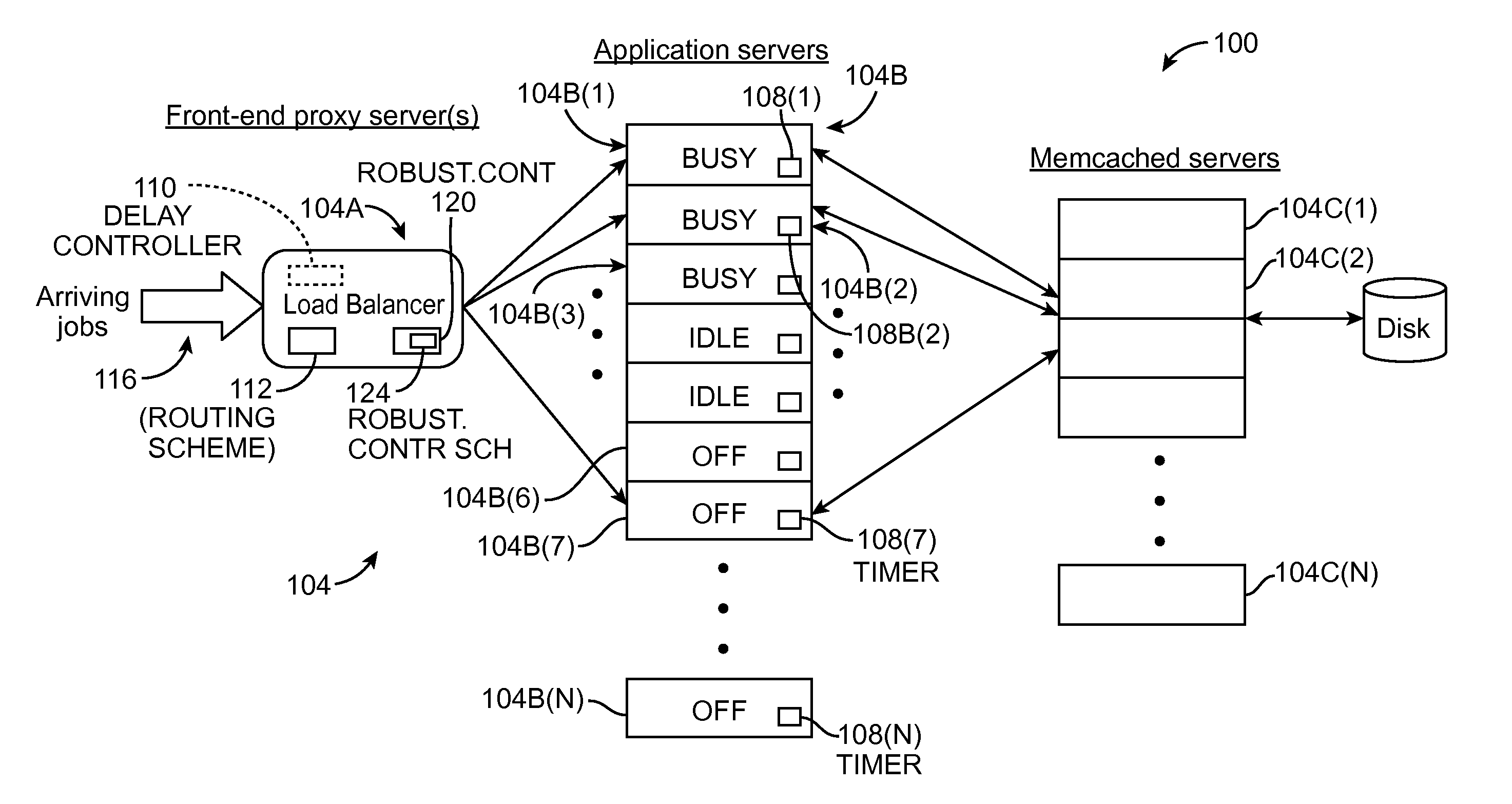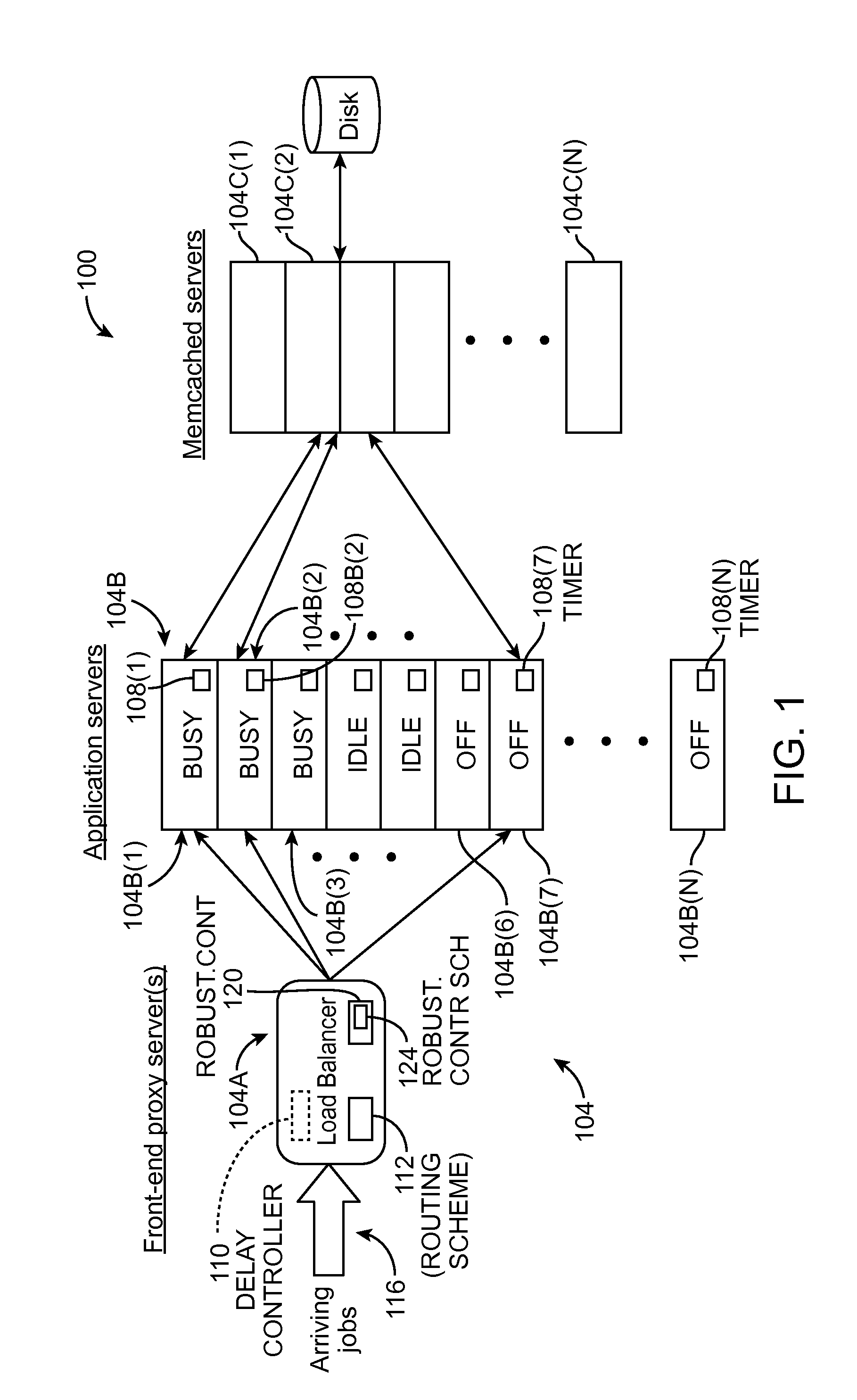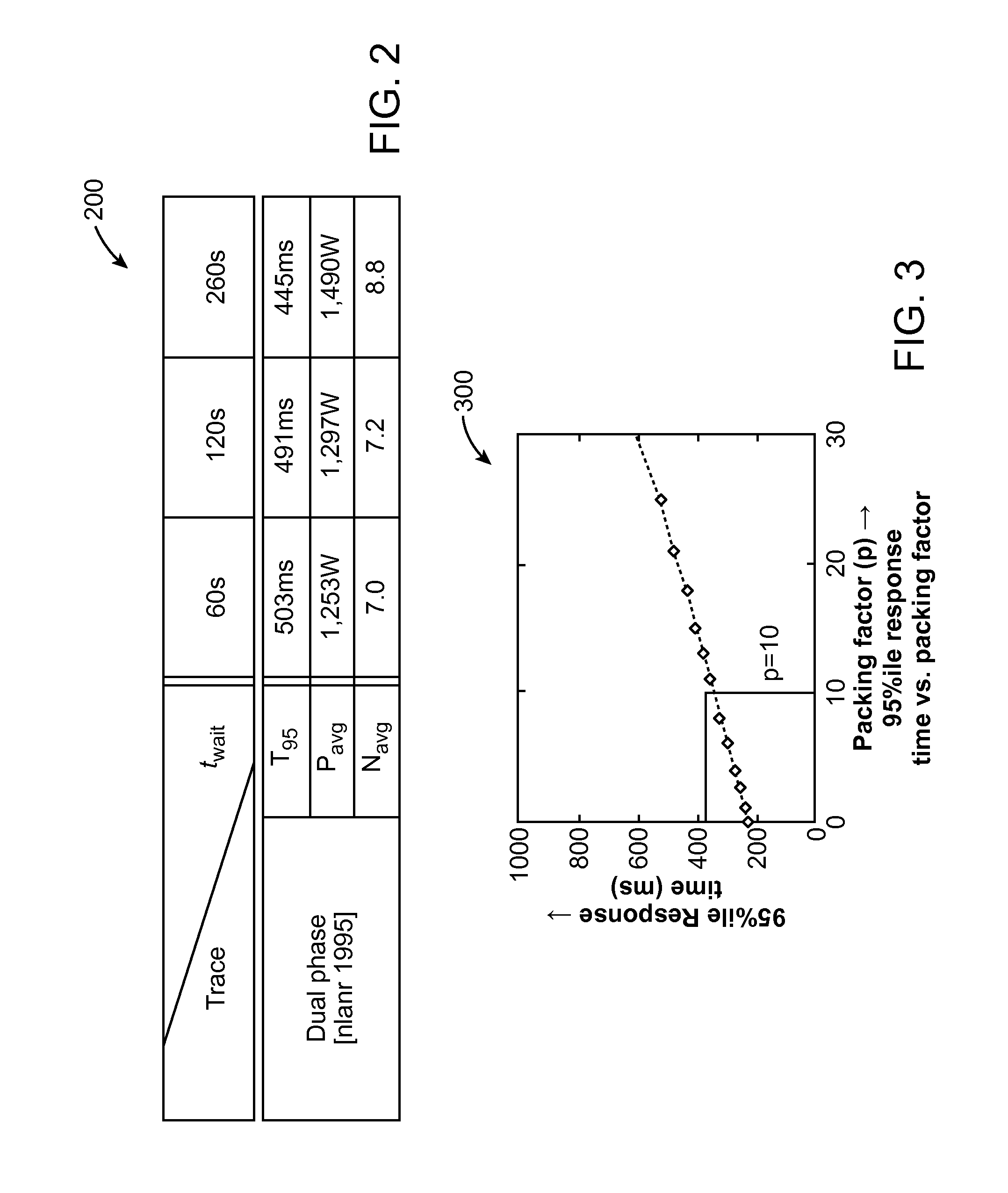Dynamic capacity management of multiple parallel-connected computing resources
a technology of parallel connection and computing resource, applied in the field of parallel connection computing resource, can solve the problems of increasing energy costs of data centers, over $15 billion yearly, and wasting a large amount of power, and achieve the effect of lowering the set-up cost and the state of low-setup cos
- Summary
- Abstract
- Description
- Claims
- Application Information
AI Technical Summary
Problems solved by technology
Method used
Image
Examples
example
[0029]Referring now to the drawings, FIG. 1 illustrates an exemplary multi-paralleled computing resource system 100 that implements various aspects and features of the present invention. In this example, system 100 is a three-tiered system of servers 104, with the first tier comprising one or more servers, here only a single server 104A, deployed as a load balancer, the second tier comprising a plurality of servers 104B(1) to 104B(N) deployed as application servers, and the third tier comprising a plurality of servers 104C(1) to 104C(N) deployed as backend memcached servers. In the context of system 100, the term “multi-paralleled” refers to the computing resources, here application servers 104B(1) to 104B(N), that actively participate in the exemplary AutoScale DCM method. It is noted that while exemplary system 100 is a three-tiered system and that the AutoScale DCM method is applied only to application servers 104B(1) to 104B(N), the various aspects and features of an AutoScale D...
PUM
 Login to View More
Login to View More Abstract
Description
Claims
Application Information
 Login to View More
Login to View More - R&D
- Intellectual Property
- Life Sciences
- Materials
- Tech Scout
- Unparalleled Data Quality
- Higher Quality Content
- 60% Fewer Hallucinations
Browse by: Latest US Patents, China's latest patents, Technical Efficacy Thesaurus, Application Domain, Technology Topic, Popular Technical Reports.
© 2025 PatSnap. All rights reserved.Legal|Privacy policy|Modern Slavery Act Transparency Statement|Sitemap|About US| Contact US: help@patsnap.com



